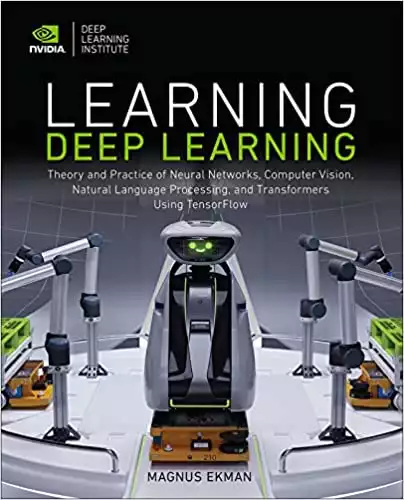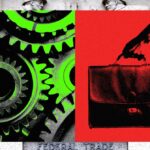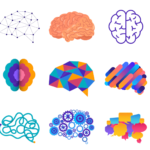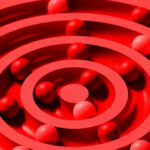Introduction:
Deep learning is a subset of machine learning and Artificial Intelligence (AI) that uses technological advancements to let computers gain data, knowledge, and experiences the same way humans do. Statistical and predictive models, both of which are part of data science, are important components of deep learning. The benefits of deep learning are vast for data scientists who are responsible for collecting, analyzing and interpreting large amounts of data. Deep learning makes this process easier and more efficient.
The concept of deep learning can be represented as a way to automate predictive analytics at its most basic level. Traditional machine learning algorithms are linear, whereas deep learning algorithms are stacked on top of one another in a hierarchy of increasing complexity and abstraction.
Deep learning can be supervised, unsupervised, semi-supervised, self-supervised, or reinforcement based, and it depends mostly on what the use case is and how one plans to use the neural network.
Let us understand this better and in depth. Here are three use cases where we can understand how deep learning methodology can be used.
Table of contents
Is deep learning supervised or unsupervised?
Deep learning, an advanced form of artificial intelligence (AI) and a subset of machine learning, leverages both supervised and unsupervised learning techniques depending on the problem context, the type of data available, and the specific outcomes desired.
Supervised learning is a popular technique in deep learning where models are trained using labeled datasets. In this context, ‘labeled’ means that each input data point in the training set is paired with its corresponding output or ‘label’. The model is tasked with learning the mapping function that connects the input to its correct output. Once this function is learned to a satisfactory degree, the model can predict outputs for unseen inputs. An instance of this technique in deep learning is the application of Convolutional Neural Networks (CNNs) for image recognition tasks. In such scenarios, the model is fed numerous images (inputs) that are pre-tagged with their respective classes or categories (labels). The goal of the deep learning algorithm is to accurately discern the features of each image that correspond to its specific category, thereby enabling it to correctly classify unseen images in the future.
Unsupervised learning, on the other hand, is a technique where the model is not provided any labeled data. Instead, it must discover hidden patterns or structures within the input data without any external guidance or pre-defined labels. This type of learning is crucial for tasks where labels may not be available or where the goal is to understand underlying structures within the data. For instance, deep learning models called Autoencoders are typically used in unsupervised learning to accomplish tasks such as anomaly detection. Autoencoders are trained to learn a compressed representation of the input data and then reconstruct the original data from this compressed version. If the model encounters a data point that significantly deviates from the norm during the reconstruction phase (an anomaly), it would likely have a high reconstruction error, which can be flagged for further investigation.
Whether deep learning uses supervised or unsupervised learning depends on the problem scope, the type of data at hand, and the specific objectives of the model. It’s also important to note that many real-world problems necessitate a mix of both techniques, leading to the development of semi-supervised and reinforcement learning approaches, which occupy the spectrum between purely supervised and unsupervised learning.
Use Case 1.
The application of deep learning in supervised learning can be seen in a wide variety of applications such as image classification or object detection, because the network is used to predict a label or number as the inputs and outputs are known. In order to reduce the error rate, the network is then employed after the labels of the images have been determined, thus explaining the term “supervised learning”.
Use Case 2.
Using neural networks, one can extract features from images, then apply an unsupervised method such as K-means clustering. Semi-supervised deep networks can be used to accomplish this.
Use Case 3.
Auto encoders are neural networks that are used to compress and reconstruct images by using latent space representations of the compressed data, so that they output whatever is being inputted. These networks are considered self-supervised learning neural networks.
Use Case 4.
It is also possible to use reinforcement learning to achieve this feat, which can be achieved using neural networks. This is the method used by DeepMind in order to arrive at its victory in the game of Go.
Also Read: What is Deep Learning? Is it the Same as AI?
What Is Supervised Learning?
If you are learning a task under supervision, someone judges whether you are getting the right answer. The principle of supervised learning is the same, in terms that the training algorithm should be trained with a full set of labeled data that gives the right response. With supervised machine learning, the algorithm learns from labeled data.
An algorithm that is fully labeled is one where each example in the training dataset is tagged with the perfect answer the algorithm would generate on its own. The model compares a new image to the training examples in order to predict whether or not the new image will be labeled correctly.
In general, you can use supervised learning for two different types of problems: classification problems and regression problems.
The classification problems require the algorithm to predict a discrete value, which identifies the input data as belonging to a particular class, or group of classes. As an example, if a training dataset of images of vehicles is used, this would mean that each photo was labeled as a sedan, SUV or compact as it was taken. The algorithm is subsequently evaluated based on how well it can accurately classify new images of other sedans, SUV’s, or compact cars.
Regression problems, on the other hand, consider continuous data in their solution. As a result, the supervised learning approach is most suitable for problems in which the algorithm can be trained with the aid of a set of reference points or a set of ground truths. This, however, is not always possible.
Also Read: How to Label Images Properly for AI: Top 5 Challenges & Best Practices.
What Is Unsupervised Learning?
Datasets that are clean, well labeled, and high quality are not easy to find, and often, researchers ask the algorithms questions which the algorithms have no idea what to do with. Unsupervised learning is an effective means for solving these problems.
With unsupervised learning, deep learning models are given datasets without explicit instructions regarding how to use them. There are no specific outcomes or correct answers to be determined in the training dataset. By extracting useful features and analyzing the data structure, the neural network attempts to find structure automatically.
Unsupervised learning models are capable of organizing data in various ways different from one another, depending on the problem at hand.
Clustering:
A collection of bird photos are easily sorted roughly by species if one takes a look at them and pays attention to cues such as feather color, beak shape, or bird size, even if one is not an expert. It is this mechanism that makes clustering such a common application of unsupervised learning the deep learning model identifies training data that are similar to each other, and groups them together.
Anomaly detection:
An effective way for banks to detect fraudulent transactions is to look for unusual patterns in the shopping behavior of customers. A similar approach can be used in unsupervised learning to identify outliers in a dataset.
Association:
In the context of unsupervised learning, certain attributes of a data sample correlate with other characteristics of the sample. If one takes a look at two key attributes of a data point, an unsupervised learning model can predict the other characteristics with which they are typically associated.
Autoencoders:
As the name implies, autoencoders take input data, compress it into a code, and then re-create the input data using this summarized code. Although a simple autocoder can be useful in some situations, it has few real-world uses. When you add a layer of complexity, the possibilities become even greater: by using both noisy and clean versions of an image during training, auto-encoders can remove noise from visual data like images, videos, or medical scans to improve image quality.
Also Read: Best Text Annotation Datasets and Tools for Computer Vision to Watch Out For In 2022.
What Is Semi-Supervised Learning?
For the most part, semi-supervised learning is exactly what it sounds like; a training dataset that includes both labeled and unlabeled data. In particular, this method is useful if extracting relevant characteristics from the data is hard, and labeling examples is a time-consuming process for experts.
It is especially useful for medical images, where a small amount of labeled data can produce a significant improvement in accuracy with just a little bit of labeling.
It is common for this kind of learning to take place in the context of medical images such as CT scans or MRIs. It is possible for a trained radiologist to go through and label a small subset of scans for tumors or diseases. In the end, manual labeling of all the scans would take a lot of time and money, but a deep learning network could still benefit from the small proportion of labeled data and improve its accuracy compared to a fully unsupervised model.
One popular method of training that starts with a relatively small set of labeled data is the use of general adversarial networks, or GANs.
What Is Reinforcement Learning?
As part of this type of machine learning, AI agents are attempting to find the optimal way to accomplish a specific goal, or to improve performance on a specific task. When the agent takes action that contributes to the goal, the agent receives a reward. The ultimate goal is to predict the best next step to take in order to earn the biggest reward at the end.
This agent uses a combination of learning from past feedback, as well as exploring new tactics that may present a larger payoff, in order to make its choices. The agent tries to maximize the cumulative reward by using a long-term strategy just as the most immediate move in a chess game may not contribute to your victory in the long run.
The process of adjusting the agent’s strategy is a continuous one. The more feedback the agent receives, the better their strategy becomes. For robots, this technique is helpful for training them to make a series of decisions in a variety of tasks, such as steering an autonomous vehicle or managing inventory in a warehouse.
Conclusion
Deep learning, a subset of machine learning and a key element of artificial intelligence, utilizes both supervised and unsupervised learning methods, depending on the nature of the problem it aims to solve and the type of data it works with. It is not exclusively bound to either paradigm, and, in fact, its strength often lies in its adaptability to different types of learning tasks.
Supervised learning in deep learning is more common and is utilized when the model has a labeled dataset to learn from. This means that the input data is paired with the correct output data, and the model is trained to learn the underlying function that maps the input to the output. For example, in image classification tasks (a common use case for deep learning), the model might be provided with many labeled images (the ‘label’ being the correct classification) and learn to classify new, unseen images correctly.
On the other hand, unsupervised learning in deep learning comes into play when there are no labels provided with the data. Here, the model is required to find patterns, correlations, and structures within the data itself without any prior guidance about what constitutes a ‘correct’ output. This is commonly used in tasks like anomaly detection, where the model needs to identify data points that deviate from the ‘norm’, or clustering, where the model needs to group together similar data points. Autoencoders, a type of artificial neural network, are an example of unsupervised learning in deep learning, where they learn to compress data into a lower-dimensional form and then reconstruct it.
Therefore, the application of supervised or unsupervised learning in deep learning is contingent on the problem scope, the type of data available, and the specific objectives of the model. In reality, many complex problems require a mix of both these approaches, and there are also semi-supervised learning strategies, where models leverage small amounts of labeled data alongside large volumes of unlabeled data.
References
Hiran, Kamal Kant, et al. Machine Learning: Master Supervised and Unsupervised Learning Algorithms with Real Examples (English Edition). BPB Publications, 2021.
Jo, Taeho. Machine Learning Foundations: Supervised, Unsupervised, and Advanced Learning. Springer Nature, 2021.
Patel, Ankur A. Hands-On Unsupervised Learning Using Python: How to Build Applied Machine Learning Solutions from Unlabeled Data. “O’Reilly Media, Inc.,” 2019.












